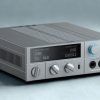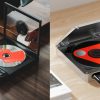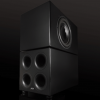From PC Annoyances, 2nd Edition by Steve Bass (O’Reilly Media).
The Annoyance:
Most of the time, the automatic numbering feature in Word works great. I type some paragraphs, select them, and click the Numbering button on the toolbar. Even easier, I start the list by typing a number before the first item, and Word magically starts applying numbers to successive paragraphs. But too often Word becomes numerically challenged, proving that it is, in fact, a word processor, not a spreadsheet program.
For example, if I have an unnumbered paragraph between two numbered paragraphs, Word will number following paragraphs in the proper sequence, but will sometimes restart at 1. If a document contains more than one numbered list, the same thing happens: subsequent lists sometimes pick up numbering from the end of the previous list. Worst of all, the numbering sometimes changes spontaneously. Everything looks just right, and the next time I open the document, my list starts with 6. Aaaargh!
The Fix:
I must give Microsoft credit; the numbering foul-ups in Word 2002 are fewer than in previous versions. But they still happen, and I avoid using the automatic numbering feature whenever possible because I just don’t trust it. I still create numbered lists, but I use a much more reliable counter: the Seq (sequence) field. Here’s how:
- At the beginning of the first numbered item, press Ctrl-F9 to insert an empty field code, which looks like a pair of curly braces.
- Between the braces, type SEQ numlist r1. (The last character is the number one, and it specifies the starting number for the list.)
Format Numbers the Easy Way If you format the number and period in a different font or color from the rest of a numbered item’s text before you create the AutoCorrect entries, Word keeps that formatting as part of the AutoCorrect entry definition. This makes it easy to automatically have bold numbers, for example.
- Click outside the braces to the right, type a period, press Tab, and enter the text for the first item. Press Enter to start the next item.
- At the beginning of the next item, press Ctrl-F9 and type SEQ numlist n between the braces. Click outside the braces, type a period, press Tab, and type away.
Now, I know this sounds way too complex, and if you do it manually as described above, it is too complex. But turn these two field codes into AutoCorrect items, and creating numbered lists is a piece of cake. Here’s how:
- If you see the field codes-the cryptic text between curly braces-instead of numbers, press Alt-F9, which toggles the display between field codes and field results. (A field result is what prints in place of the field code.)
- Select the number “1”, the period, and the tab character that follows.
- Choose Tools ® AutoCorrect (AutoCorrect Options in Word 2002).
- In the Replace box, type 1]. Next to With, select “Formatted text.” Then click OK.
- In your document, select the number “2”, the period, and the tab character.
- Choose Tools ® AutoCorrect (AutoCorrect Options in Word 2002).
- In the Replace box, type n]. Next to With, select “Formatted text.” Then click OK.
Once you’ve created these two AutoCorrect entries, which are now available whenever you use Word, creating numbered lists is easy. You need to remember only three things:
- At the beginning of the first item in a list, type 1] followed by a space. When you press the space bar, Word replaces the text with the AutoCorrect entry: a field code that displays the number 1 followed by a period and a tab.
- At the beginning of all subsequent list items, type n] followed by a space. Word will enter the appropriate number in sequence.
- You can add, remove, and move items any time-but the field results don’t change automatically. If the displayed numbers are incorrect, press Ctrl-A to select them all and then press F9 to update the fields.
 This material has been adapted from PC Annoyances, 2nd Edition by Steve Bass, published by O’Reilly Media, Inc. Copyright O’Reilly Media, Inc., 2005. All rights reserved.
This material has been adapted from PC Annoyances, 2nd Edition by Steve Bass, published by O’Reilly Media, Inc. Copyright O’Reilly Media, Inc., 2005. All rights reserved.
This easy to read, accessible book from PC World expert Steve Bass covers the waterfront of PC gripes and gremlins, with fixes for everything from Windows glitches to browsers that won’t browse. Each fix is served up in bite-sized portions for quick reading–and even quicker fixing. A revised version of its best-selling predecessor, the 2nd edition offers 50 additional pages and over 120 new fixed annoyances.
PC Annoyances, 2nd Edition is available for purchase from Amazon.com, Amazon.co.uk, Amazon.ca and the sellers listed below.




























